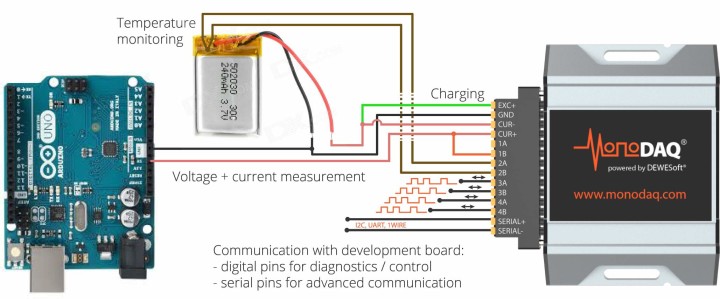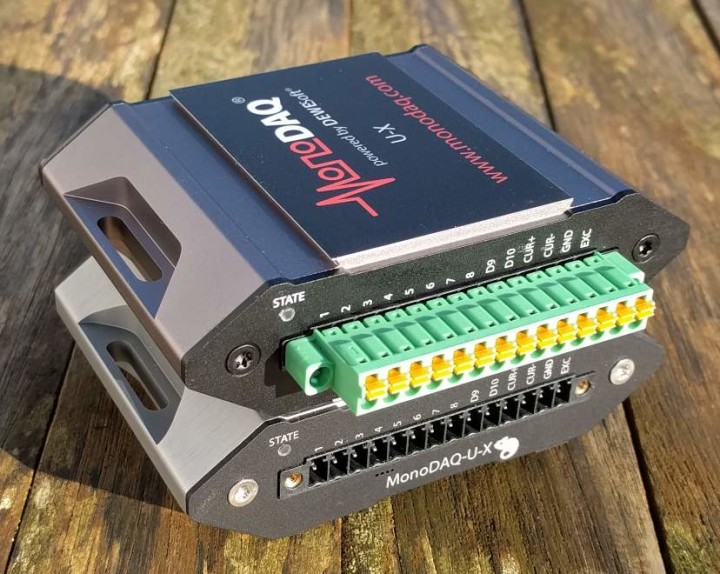Review: MonoDAQ-U-X for low-cost high-quality data acquisition
January 22, 2019
on
on
What is it?
The MonoDAQ-U-X is a rather curiously shaped measuring device roughly the size of a packet of cigarettes (I don’t smoke so I may be wrong; its official dimensions are 95.5 × 67.3 × 27.8 mm). According to the manufacturer it is a “multifunctional, isolated USB data acquisition device for voltage, current, temperature, strain and resistance measurement”. It vaguely reminds of National Instruments' myDAQ.
The device’s flexibility is in large part due to eight configurable I/O pins that can be either analogue or digital and inputs or outputs. A 14-pin connector gives access to these eight configurable I/O ports, in addition to a 2-way digital port (supporting the 1-Wire protocol), a current input (0.5 Ω floating or not, or 1 kΩ) and a programmable voltage output (for sensor excitation or as power supply).
Robust, can be strapped to almost anything
Made of aluminium and weighing about 170 grams, the MonoDAQ-U-X feels robust and quite heavy. Communication between the MonoDAQ-U-X and the host computer is over a galvanically isolated USB-C connection. It has slits to strap it to the system to be measured and multiple devices can be stacked thanks to a special mounting design.
Multiple MonoDAQs can be hooked up to the same computer by using one or more suitable USB-C hubs (but check with MonoDAQ first before investing in a hub, they are not all created equal).
The MonoDAQ-U-X is not a high-speed USB oscilloscope...
... it is a precision data acquisition device. It can do 16 bits up to 50 kS/s on a single channel; at a sample rate of 100 Hz the resolution is specified as 20 bits. The sample rate budget is shared by the activated input channels. For many measurement applications these specifications will be sufficient.Note that the MonoDAQ comes in two speed grades: 50 kS/s (U-X-50) and 1 kS/s (U-X-1). We tried the high speed one (50 kS/s).
Specifications short list
In analogue mode the device can be configured up to:- 8× single ended input (2 V or ±100 mV)
- 4× single ended buffered (±10 V, inputs 1, 3, 5, 7)
- 4× differential input (±2 V, input pairs 1&2, 3&4, 5&6 and 7&8)
- 2× differential buffered input (±10 V, input pairs 1&3 and 5&7)
- 2× single ended output, 0-4 V, shared over two pairs (2&4 and 6&8)
In digital mode these pins can be used (together with D9 & D10) as up to ten TTL-compatible I/O ports.
To understand pin configuration and see how pins influence eachother it is a good idea to play a bit with the Channel Setup tool in the software (see below).
Read full article
Hide full article



Discussion (0 comments)